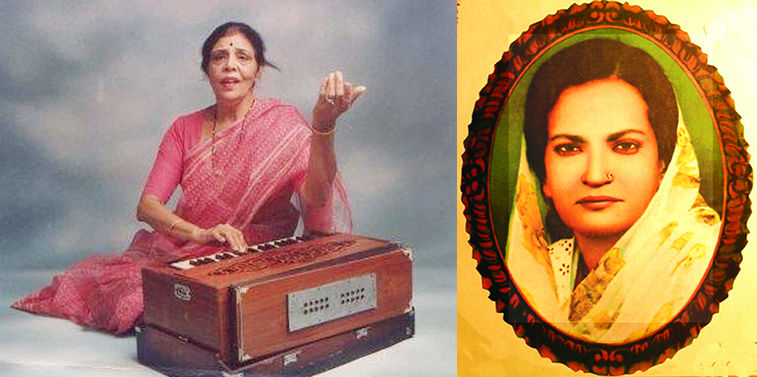With Padmashri Shanti Hiranand’s going, India loses its last link to Begum Akhtar
- Arijit Bose
- Apr 22, 2020
- 3 min read

It is not for nothing that Akhtari Bai Faizabadi and Padmashri Shanti Hiranand shared a very cordial bond throughout their respective lives. Akhtaribai Faizabadi was born in 1914 in Gulaab Baari in Faizabad to a courtesan named Mushtari Bai. She made Hiranand her “gandaband shagird.”
A story goes that Shanti and Begum Akhtar were in Pakistan. When they reached the neighbouring nation for a show, the immigration officials started acting pricy. Spotting a Hindu and Muslim name, the inquisitiveness peaked, but Akhtar immediately intervened and said that she is my daughter. She also said that. “This is very common in our country. Must be unusual for you people.”
In the city of Lucknow, Sadatganj is home to the tomb of Akhtar, one of India’s most iconic artists who mesmerized the world with her mellifluous voice. A place which had virtually turned into a jungle with petty localites either abusing drugs, indulging in sex or urinating and defacating. Moved by the plight of the place, it was Akhtari Bai Faizabadi aka Begum Akhtar’s most trusted disciple who was as good as a daughter Shanti Hiranand who once again with help restored the place in loving memory of the classical doyen. Interestingly the restoration work by the Sanatkada trust, saw equal participation by Hiranand and others with exquisite pietra dura work on both graves.
Protected by a brick boundary wall, now the place is marked by a signboard that clearly spells out the significance of the place. This with a small mention of the people behind the restoration.
Hiranand each year had been part of a number of classical thespians paying rich tribute to the legend on her birth anniversary on 7 October.
Moving to Lahore, Hiranand had continued her training in Lahore. Post partition she was back in India and trained under Ustad Aijaz Hussain Khan and, later, with great Begum Akhtar in 1957 under whom she learnt thumri, dadra and ghazal. She gave her first performance in All India Radio in 1947.
Life for Hiranand completely changed after she came in contact with Begum Akhtar. As the only two pupils who were accepted by the legend, it was interestingly Begum Akhtar who had once remarked at a concert that after her death, her musical legacy will be best carried foward by Shanti Hiranand.
Known to have very effectively picked up the gayaki style of her guru, Shanti picked up the basics and then improvised in a disciplined manner. Most importantly she created her own unique signature, steering clear of imitation in strict averment of her guru. Henceforth ensuring individuality, imagination and a gamut of emotions which brought something fresh to the table.
Shanti Hiranand was so much in awe of her teacher that she would call Begum Akhtar her Ammi. Starting early in life, she took music very seriously. Unlike the business roots in the family, she was pushed to hone her craft as a singer, which she took very seriously. She trained at the city’s Marris College of Music (now the Bhatkande Music Institute Deemed Univesity).
Not just a dedicated artist, but Shanti Hiranand devoted equal time to training up youngsters, passing on the precious legacy to deserving students. She was a regular at New Delhi’s Triveni Kala Sangam. A Begum Akhtar disciple unlike any other for over two decades, she devoted her life to her “Ammi” singing range of thumris, bhajans and dadras, with ghazal.
Anjali Banerjee is the other disciple, but she didn’t take up music professionally. Hiranand has also authored a biography of her guru, Begum Akhtar: The Story of My Ammi. In 2010, her first ever album, Jo Aaj Tak Na Keh Saki, was released containing ghazals. One of the ghazals, ‘Tumhara Aqs Hoon’, describes her feelings for her Ammi. Not a great one for film songs, she recorded a song for the Indo-American co-production Siddhartha (1972), directed by Conrad Rooks. In addition to singing for the film, Shanti Hiranand played the role of Kapoor’s mother in Siddhartha. She also sang for Rajan Khosa’s Swara Mandal or Dance Of The Wind (1997).
Padmashri Shanti Hiranand died in Gurugram at the age of 87 on April 10. With her passing away, the world has lost its last link to the Begum Akhtar legacy. She will always be remembered as the true inheritor of Begum Akhtar’s gayaki (singing style).
Comments